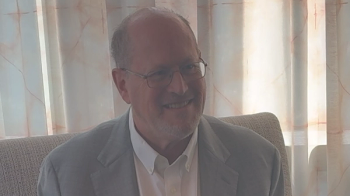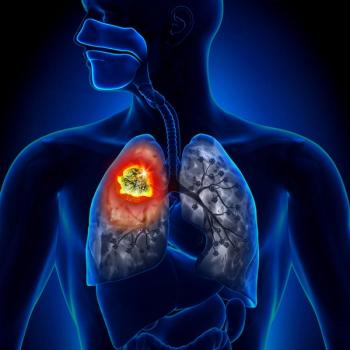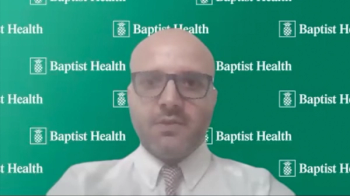
Metachronous Low Disease Volume May Result in Better Prostate Cancer Prognosis
Synchronous disease appears to have a more hormone dependent transcriptional profile than metachronous disease, according to a retrospective review of patients with metastatic castration-sensitive prostate cancer.
Among patients with metastatic castration-sensitive prostate cancer (CSPC), those with synchronous disease expressed a less hormone-dependent transcriptional profile than those with metachronous disease and may respond better to multimodal therapy approach, according to a retrospective study published recently in the Annals of Oncology.
The median androgen receptor (AR) activity scores were 11.78 vs 12.64 for those with synchronous and metachronous disease, respectively (P <.01), and the median hallmark androgen response (HAR) scores were 3.15 vs 3.32, respectively (P <.01). Overall, 37.7% of patients with synchronous disease had low AR activity, and 58.3% had low HAR scores compared with 19.8% (P <.01) and 37.6% (P <.01), respectively, of those with metachronous disease.
Notably, those with synchronous disease obtained better overall survival (OS) with multimodal therapy than monotherapy (Hazard ratio [HR], 0.47; 95% CI, 0.30-0.72; P <.01), and those with metachronous disease did not (HR, 1.37; 95% CI, 0.50-3.92; P = .56; interaction P <.05).
“To our knowledge, this report is the first to demonstrate a biologic difference between timing of metastatic disease,” the investigators wrote.
“We have demonstrated that patients with synchronous (but not metachronous) disease may experience improved outcomes with AR plus non–AR combination therapy, likely as a result of their lower androgen response profile. This aligns with clinical trials showing androgen deprivation therapy [ADT] plus docetaxel has a clear effect in high volume (synchronous and metachronous) and less—but still some effect—in [patients] with synchronous low volume who also benefit from radiating the primary.”
Investigators of this multinational, multi-institutional retrospective review derived these findings from an analysis of 252 patients with metastatic CSPC who underwent RNA expression profiling evaluations of their primary tumor. The most common treatment modalities included ADT with or without docetaxel (63.5%), ablative radiation therapy with or without systemic therapy (33.0%), and observation (3.6%).
Overall, 60.0% of this population consisted of patients with synchronous disease. Microarray (63.5%) and RNA sequencing (36.5%) were the most frequent methods of transcriptomic evaluation.
The median patient age was 64 years (interquartile range, 56.3-70.0). The most common Gleason Grade Group was 5 (49.6%). Exactly half of the study population (50.0%) each had low-volume and high-volume disease, respectively.
The primary end point was to catalogue the differences between synchronous and metachronous disease in terms of transcriptomic profiles. Secondary end points included determining the clinical and transcriptomic variables associated with time to castration resistance (ttCRPC) and overall survival (OS) from the time of metastasis.
The median ttCRPC among patients with synchronous disease was 15.4 months compared with 91.0 months among those with metachronous disease.Similarly, the 5-year rates of castration resistance were 24% and 78% among those with synchronous and metachronous disease, respectively (P <.01). The 5-year rate of OS was 39% for synchronous and 79% for metachronous disease (P <.01).
However, disease timing was not associated with a significant difference in either ttCRPC (HR, 1.67; 95% CI, 0.94-2.96; P = .08) or OS (HR, 1.18; 95% CI, 0.61-2.31; P = .62) when accounting for disease volume and transcriptomic differences.
“Although understanding the prognostic implications of disease timing are of great interest, understanding the biologic underpinnings are paramount to guide therapeutic decision making as well as identify drivers and potential targets of aggressive disease,” the investigators concluded. “We [showed] that patients with high-volume or synchronous low-volume disease may derive the greatest benefit from multimodal therapy targeting AR and non–[AR] biologies, potentially a result of this biologic difference.”
Among other potential limitations to this study, investigators noted that it was likely underpowered to detect differences in disease timing within the high-volume disease cohort because only 13 patients with metachronous high-volume disease were included for analysis.
Reference
Sutera PA, Shetty AC, Hakansson A, et al. Transcriptomic and clinical heterogeneity of metastatic disease timing within metastatic castration-sensitive prostate cancer. Ann Oncol. Published online May 8, 2023. doi:10.1016/j.annonc.2023.04.515
Newsletter
Stay up to date on recent advances in the multidisciplinary approach to cancer.



















































































